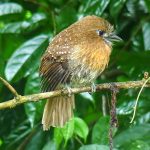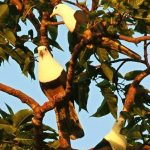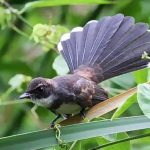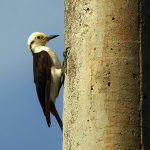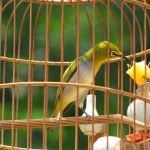Magpie lark
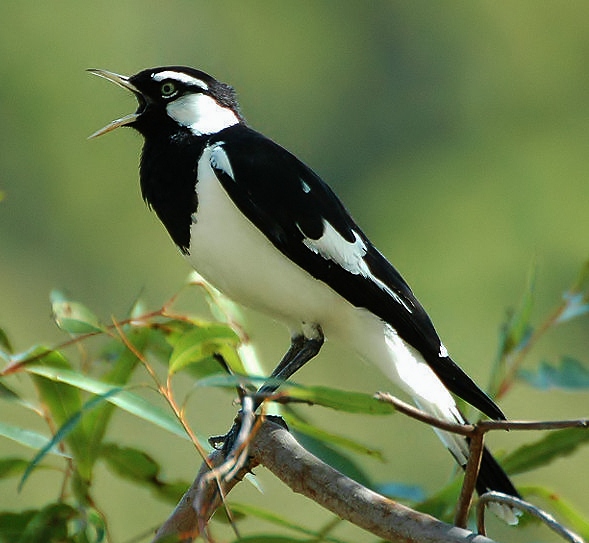
 |
| (Photo from Wikipedia) |
Common name:
magpie lark (en); cotovia-bicolor (pt); gralline pie (fr); alondra urraca (es); drosselstelze (de)
Taxonomy:
Order Passeriformes
Family Grallinidae
Range:
This species is found in Timor, southern New Guinea and throughout Australia, occasionally also in Tasmania.
Size:
These birds are 26-30 cm long and weigh 80-115 g.
Habitat:
Magpie larks are found in almost any available habitat within their range, with the exception of dense rainforests and very dry deserts. They are often found inside urban areas.
Diet:
They forage on the ground, taking various insects and their larvae, but also earthworms, freshwater snails and even small reptiles.
Breeding:
These birds can breed all year round, with both sexes building a bowl-shaped nest, made of mud, placed in an horizontal branch or similar structure up to 20 m above the ground. There the female lays 3-5 pinkish-white eggs with brown speckles, which are incubated by both parents for 17-19 days. The chicks fledge 21 days after hatching. Each pair can raise several broods per year.
Conservation:
IUCN status – LC (Least concern)
The magpie lark has a very large breeding range and is described as very common. The population is suspected to be increasing as ongoing habitat degradation is creating new areas of suitable habitat.
